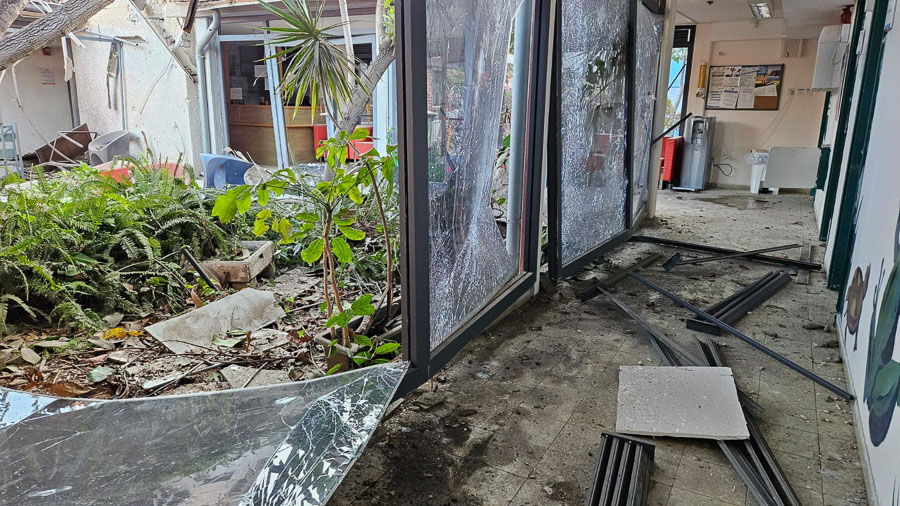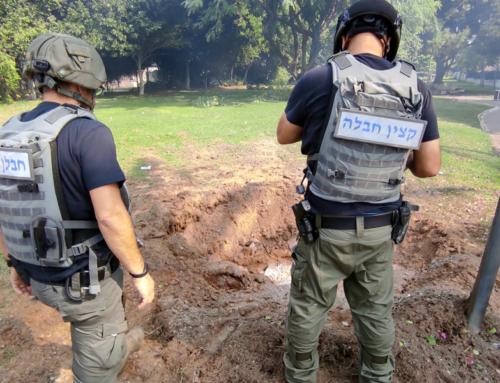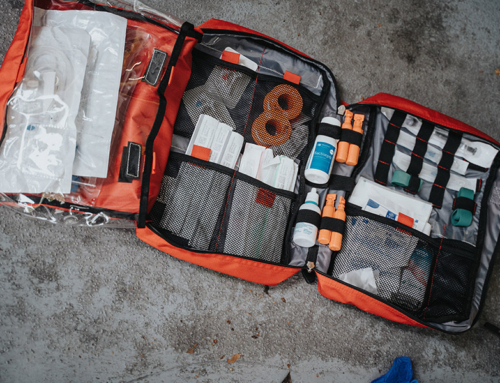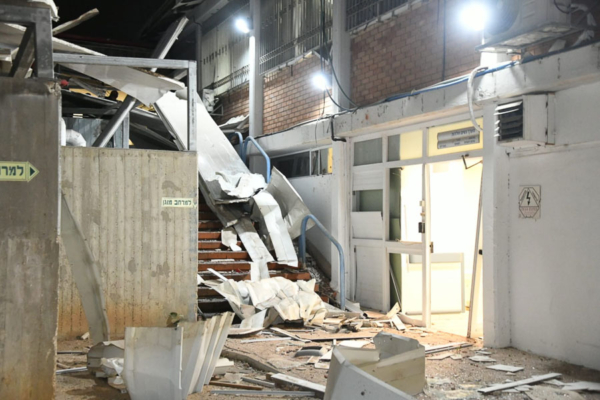
Barzilai hospital was hit in more than one location.
By Alison Epstein
The photos here are from a hospital hit by rocket fire. Tragic, right?
But this hospital isn’t the al-Ahli hospital in Gaza City that is all over the news of late. It’s Barzilai hospital in Ashkelon, the Israeli city where I live.
Hamas fired the rockets that destroyed Barzilai’s child development center on Oct. 11, on the fifth day of the war. Hamas terrorist rockets also destroyed a bridge connecting buildings within the Barzilai complex – a hospital that houses the closest Level One Trauma Center to the Israeli border with Gaza.
These rocket attacks were largely unreported outside Israeli media.
Several days later, another hospital was hit – also by rockets launched by terrorists trying to kill civilians. On Oct. 17, Palestinian Islamic Jihad (PIJ) terrorists aimed their rockets at cities like mine; and one of their rockets malfunctioned and hit al-Ahli Hospital. Hamas’ Ministry of Health officials immediately began putting out a false narrative about hundreds of dead after an Israeli air strike on the hospital.
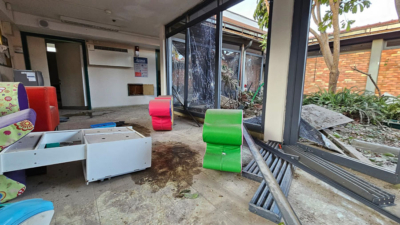
Barzilai child development center
News outlets like The New York Times jumped onto the terrorist-propaganda-train and ran a story blaming the attack on Israel without bothering to verify the facts.
The Israeli Defense Forces (IDF) quickly explained that it didn’t have any planes in that area at the time. A HUGE crater – as Israeli ordnance makes – was missing. Instead, lots of shrapnel damage and fire, like after a terrorist rocket hits.
Other evidence includes an intercepted conversation between two Hamas operatives discussing how a PIJ rocket misfired and hit the al-Ahli hospital. (There are numerous news stories summarizing the IDF investigation. But the Americans, French, Canadians and the Associated Press have come to the same conclusion: The rocket strike was a self-inflicted wound; it was not the result of any Israeli action.
Today (Oct. 23, 2023), some six days after the fact, The New York Times issued an Editors’ Note – not even a correction – which says:
On Oct. 17, The New York Times published news of an explosion at a hospital in Gaza City, leading its coverage with claims by Hamas government officials that an Israeli airstrike was the cause and that hundreds of people were dead or injured. The report included a large headline at the top of The Times’s website.
Israel subsequently denied being at fault and blamed an errant rocket launch by the Palestinian faction group Islamic Jihad, which has in turn denied responsibility. American and other international officials have said their evidence indicates that the rocket came from Palestinian fighter positions.
The Times’s initial accounts attributed the claim of Israeli responsibility to Palestinian officials, and noted that the Israeli military said it was investigating the blast. However, the early versions of the coverage — and the prominence it received in a headline, news alert and social media channels — relied too heavily on claims by Hamas, and did not make clear that those claims could not immediately be verified. The report left readers with an incorrect impression about what was known and how credible the account was.
The Times continued to update its coverage as more information became available, reporting the disputed claims of responsibility and noting that the death toll might be lower than initially reported. Within two hours, the headline and other text at the top of the website reflected the scope of the explosion and the dispute over responsibility.
Given the sensitive nature of the news during a widening conflict, and the prominent promotion it received, Times editors should have taken more care with the initial presentation, and been more explicit about what information could be verified. Newsroom leaders continue to examine procedures around the biggest breaking news events — including for the use of the largest headlines in the digital report — to determine what additional safeguards may be warranted.
When world media – including the premier paper of record – allow coverage to be tainted by systemic anti-Israel bias, the fight is not just against terrorists. It is also a battle for the truth.
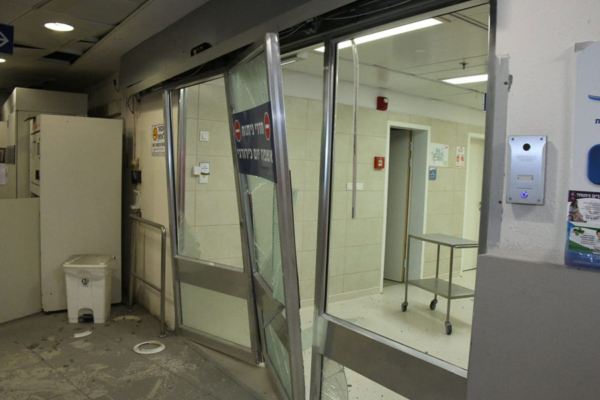
Barzilai hospital

Barzilai child development center
Photos courtesy of Barzilai hospital
